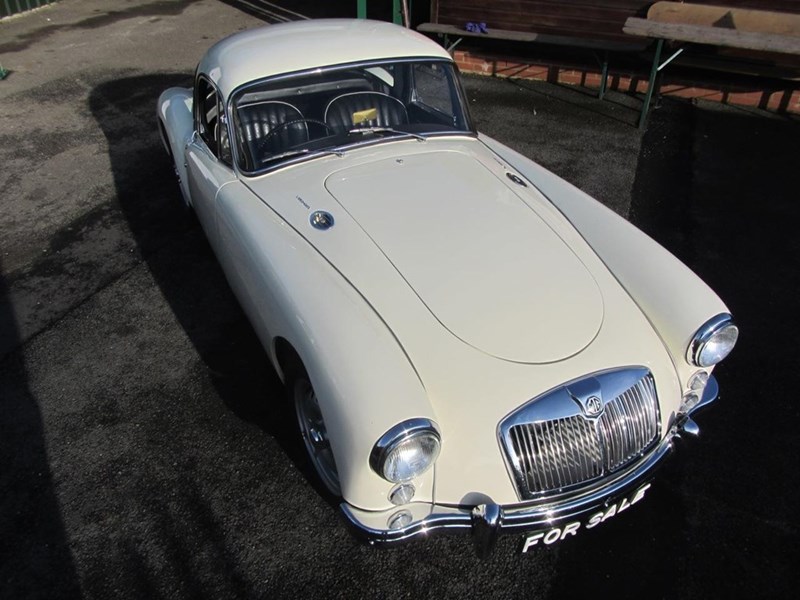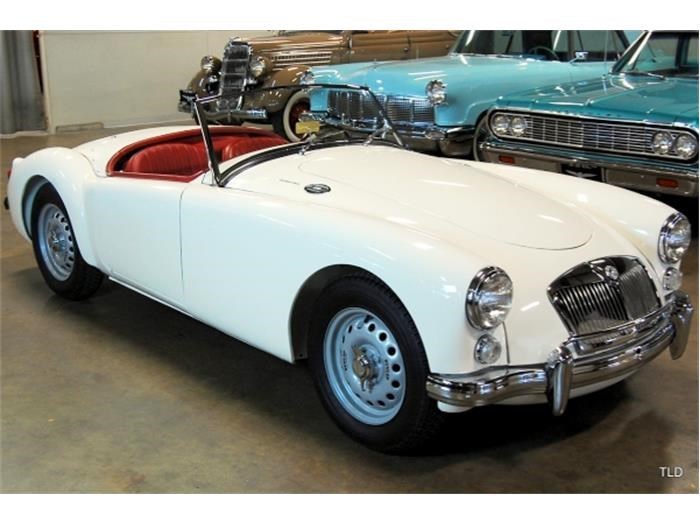Too specialised for mass-production in the 1950s, but modern tweaks make them work.
After years of languishing with largely pre-war designs, the very good-looking and well-performing MGA of 1955 gave MG a new optimism, as well as won new customers. Its success meant rapid development, with the original 1489cc engine being upgraded to 1588cc in 1959 and then 1622cc for 1961. A coupe complemented the original convertible in 1956 and there were numerous other nips and tucks to gradually improve the breed.
But not every change was for the better, however well-intentioned. The MGA Twin-Cam of 1958 was an innovative attempt to build an even more performance-orientated version capable of what the market was asking for: a 100mph MG. For this, the 1588cc B-series engine was reqorked with twin overhead camshafts and an alloy cylinder head. however, the engine proved temperamental, being prone to detonation and burning oil and in need of constant tuning.
The warranty claims were extensive and so, after two years and 2111 examples, the Twin Cam was discontinued in June 1960. Understanding owners have made it a more reliable proposition.
VITAL STATISTICS
Engine: 1588cc/4-cyl/DOHC
Power: 108bhp@6500rpm
Torque: 104lb ft@4500rpm
Maximum speed: 114mph
0-60mph: 13.3sec
Fuel consumption: 23-25mpg
Transmission: RWD, four-spd manual
WHAT TO LOOK OUT FOR
Bodywork
Especially vulnerable grot spots are the sills and A-posts, but wings also go, so check everywhere thoroughly. Door bottoms go frilly, as does the boot floor. The doors themselves are aluminium over steel, as are the bootlid and bonnet, but the combination of these two metals together can cause electrolytic corrosion. Both the bonnet and bootlid have a wooden stiffener, whic rots. Look for good panel gaps - any uneven or big apertures and/or rippling points to possible accident damage and possibly a twisted chassis.
Chassis
The chassis is quite tough, but if you do suspect an accident then get underneath to look for any kinks or ripples. Focus in the front and rear chassis legs for any issues, and check the integrity of the wooden floorboard supports.
Engine
Don't think that because the twin-cam engine started life as a good ol' B-series, it will be cheap and easy to fix. It won't as it requires expert and expensive knowledge. Be suspicious of any engine that is noisy up top or runs badly - burnt pistons can strike, although it's less likely on later low compression cars. Disconnecting the distributor vacuum advance genuinely makes the engine run better. Oil pressure should be 50psi at 3500rpm and oil consumption is around a pint every 200 miles. Watch for blue smoke from the exhaust and be wary of hit running. Check for possible head gasket issues such as water and oil mixing and mayonnaise under the oil filler cap.
Transmission
Gearboxes can also be troublesome, with second gear synchromesh likely to start disappearing. Chattering in first and reverse is also a sign of all not being well. Loose hub nuts can allow the differential to spin against the axle casing, which will damage both items.
Brakes and suspension
The Dunlop disc brakes can suffer from binding or scoring if the calipers have seized, something the rear ones are quite prone to . Worn or tight suspension trunnions are also quite common, along with leaking or worn-out lever arm dampers. Check the gaiters on the rack-and-pinion steering to make sure they haven't split, as this will water and mud in.
Interior
Most interior trim is available and replaceable. Look for pitting of any Mazak parts and damaged vinyl dash covering. The electrics are Lucas - so expect the unexpected sometimes - but again everything is available to rectify any issues.
OUR VERDICT
The Twin-Cam is the most desirable of all classic MGs, and prices reflect this; a Roadster version is worth more than twice the value of an MGC. The extra performance and the four-wheel disc brakes make it very usable and capable in modern traffic conditions, in a way few other 1950s cars can. It is thoroughly entertaining to drive. Then there are the looks - the flowing Sid Evener shape puts it not just among the most attractive of MGs, but also the most beautiful of all British cars. There's also the perverse satisfaction of owning something that once was so problematical. Because, as a modern owner, you get to experience the MGA's true potential, in a way denied to those who bought them originally.

